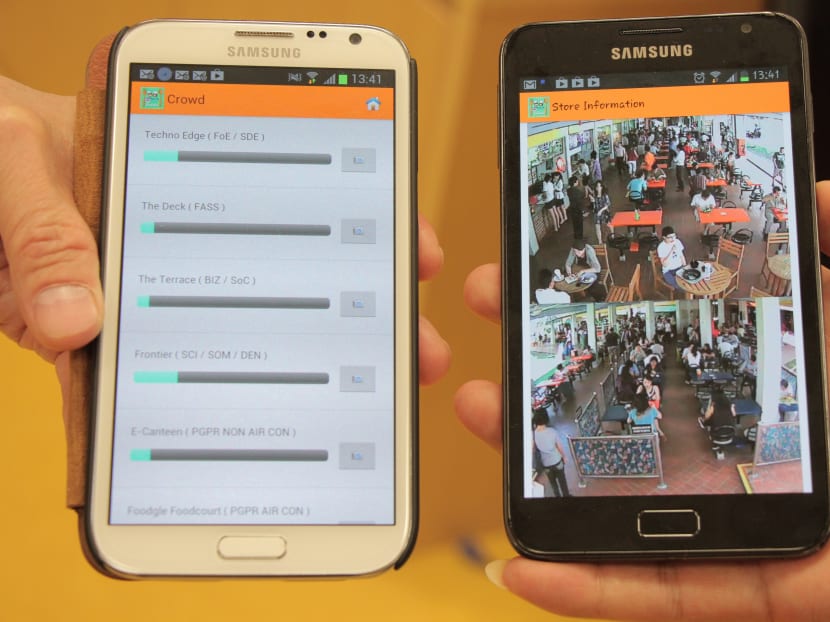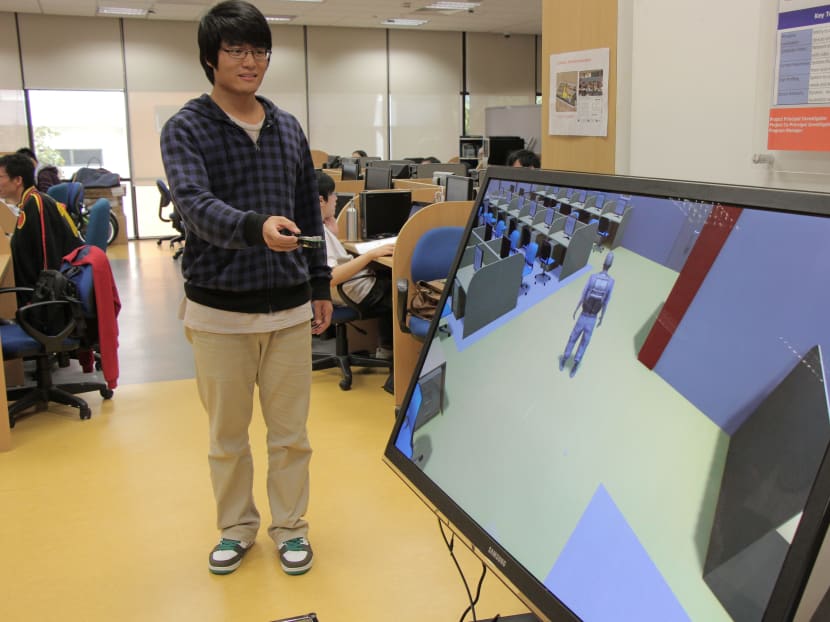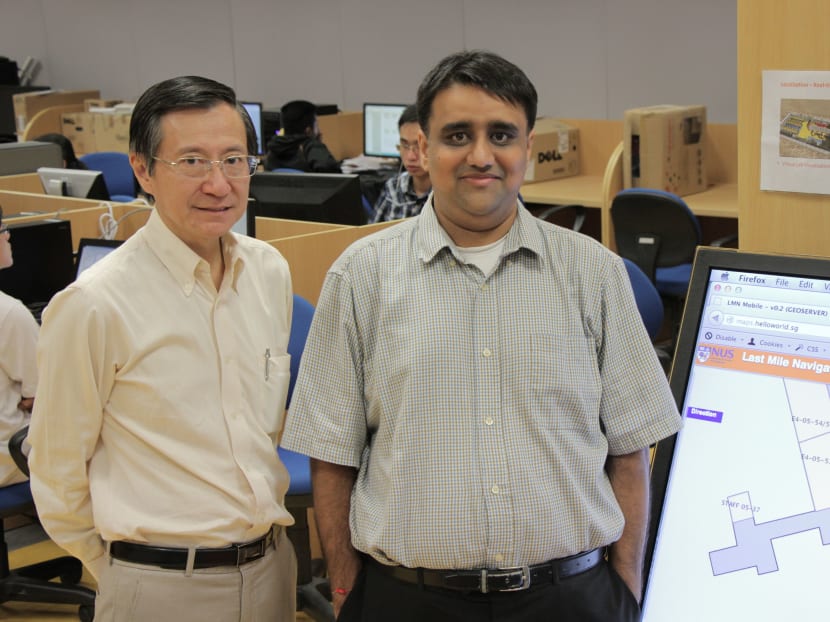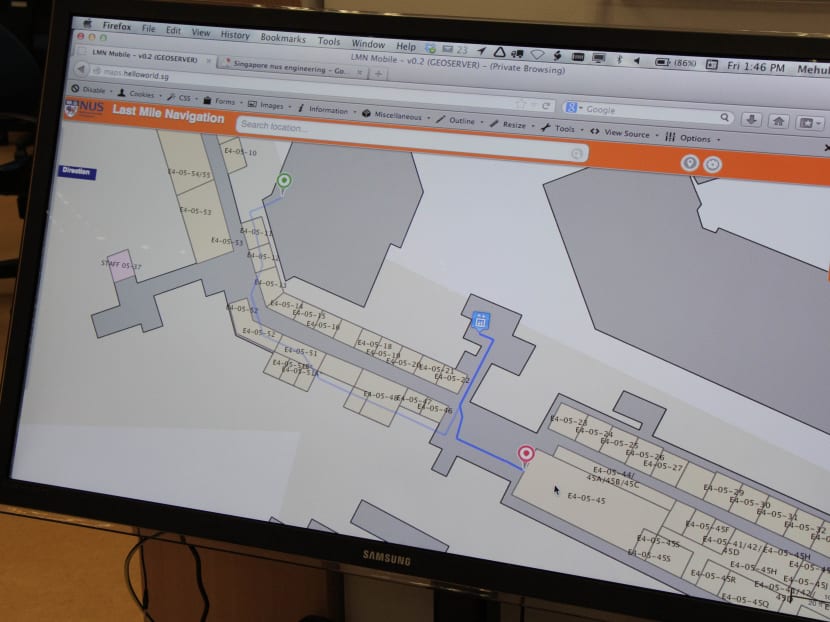University campus a digital-solutions test bed
SINGAPORE — The National University of Singapore has a new role: as a test bed for new interactive digital media (IDM) or info-communications technology (ICT) solutions before they are launched commercially.




SINGAPORE — The National University of Singapore has a new role: as a test bed for new interactive digital media (IDM) or info-communications technology (ICT) solutions before they are launched commercially.
The NUS Living Lab was launched at InnovFest 2013, an annual festival of innovation and enterprise-related events and activities that brings together researchers, entrepreneurs, SMEs, and government agencies, held from May 14 to 16. NUS Enterprise and the NUS Interactive and Digital Media Institute (IDMI) jointly announced the launch.
The NUS Living Lab offers an extensive sensing infrastructure, shareware and coordination and support for partners testing new applications on a collaborative basis.
The creation of the NUS Living Lab did not happen overnight. “We’ve had the idea of creating a living lab on campus for the past two to three years,” said Professor Lawrence Wong, Deputy Director of NUS IDMI.
“This is a campus with students, where there is a lot of hidden talent, so one of the things we wanted to do was to build services that students could use to create applications,” said Associate Professor Mehul Motani from the Department of Electrical and Computer Engineering at NUS. “Often, the best applications are not what we will envision, but built by people who see the potential for them based on their needs.”
NUS is not new to testing digital solutions on campus. For example, an application was launched last year called Next Bus Info, which involved equipping campus shuttle buses with GPS to give their arrival times at bus stops.
Said Prof Wong: “We have a lot of intellectual property that is created because of our research, but not much of it gets commercialised, so this test bed is also to make that journey to commercialisation easier.”
“Very often, when you announce that you have this (idea for an application), you’ll be asked for a prototype or proof of concept. You may have (journal) papers (published), but that’s not good enough.”
NUS IDMI has already begun work on some fascinating pilot projects.
INDOOR LOCALISATION AND NAVIGATION
This project takes advantage of more than 3,000 Wi-Fi access points found across the NUS campus. “The idea is to leverage on what you have, which facilitates the adoption (of the technology),” said Prof Wong. “Putting in new infrastructure can be a costly undertaking.”
This is how the technology works: In the IDMI lab, ceiling transmitters each send out an ultrasound signal and a radio signal, and a delay between the arrival of the two appears, as sound waves travel slower than radio waves. This delay can tell you how far you are from the transmitter, and with three or more transmitters your position can be triangulated.
The tracking technology has a precision of tens of centimeters, and can give a reading within a second, which works for tracking movement. “You can buy off-the-shelf trackers — and we’ve tried that — but they can only give an precision of 2m and take 10s to give a reading,” said Prof Wong. “That’s not good enough for applications that track moving people.”
The indoor localisation technology can give your exact location, down to the room you are in. “With this capability, we can start developing location-aware mobile apps that can cover outdoor and indoor locations,” said Prof Wong. “We’re the only test bed that provides a test area at the scale of an entire campus, and not just one building or shopping mall,” he added.
The NUS Living Lab also demonstrated their Last Mile Navigation service. “What we can do that no other service can is provide fine-grain, last-mile navigation,” said Assoc Prof Motani. “Google Maps might get you to the university building you want, but not to specific tutorial rooms or lecture theatres.”
Developing the Last Mile Navigation service was not easy: With more than one hundred buildings on the NUS campus, there were four to five hundred floor plans that had to be digitised, explained Prof Wong. A database for routing was then created with the help of an algorithm.
CROWD DENSITY ESTIMATION
This project employs more than a hundred cameras, which are different from the ones used by campus security, explained Prof Wong. “These cameras allow us to do intelligent vision-based computer analytics,” he said.
The camera feeds are analysed to determine how crowded it is at various locations in NUS cafeterias at different times, and the crowd levels and snapshots of the cafeterias, which are updated every 30s, can be viewed on mobile devices.
DETECTING FLU OUTBREAKS
The NUS Living Lab facilities are available to non-NUS researchers: A*STAR’s Bioinformatics Institute is conducting its project “Recognizing Flu-like Symptoms from Videos” with help from the NUS Living Lab.
The idea behind this project is to detect sneezing and coughing through surveillance videos, so that flu outbreaks can be identified, explained Dr Ye Ning, Post-Doctoral Research Fellow at the Bioinformatics Institute. If on a certain day the technology detects a large number of sneezes, it could mean there is seasonal flu, and warning can be given to public health agencies.
“We came to the NUS Living Lab because to train our algorithm (to detect sneezes and coughs visually with accuracy), we need a lot of data and many volunteers to act out these movements, and we need the surveillance infrastructure,” said Dr Ye.
The current practice of detecting flu outbreaks by relying on data on clinic visits involves some delay: By the time that data points to an outbreak, it has already happened, perhaps weeks before, explained Dr Ye. “If we can build this (detection) system, we can give warning much earlier,” he said.
WHAT’S NEXT FOR NUS LIVING LAB
Calls for proposals to the NUS Living Lab are expected to be answered by mid-June, according to Mr Kelvin Tan, Deputy Director of NUS Enterprise. Developing pilots and trials is scheduled to start by the end of August, and the first product from the NUS Living Lab should be on its way to commercialisation by December, added Prof Wong.
“We are creating an entire ecosystem in which you have inventors on one end of the scale and commercialisation on the other, with infrastructure, incentives and programmes to develop the culture of creativity and innovation,” said Prof Wong. “The ecosystem is now in place to give vibrancy — that’s the whole intent.”





